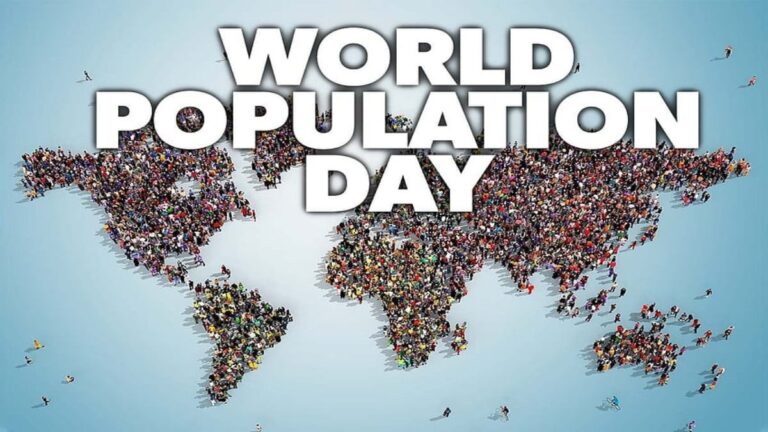
[ad_1]
The globe is really large. More than 8 million animal species, 8 billion people, and limitless numbers of plants and insects live here. It provides us with housing, feeds us, and allows us access to its resources even though 71% of it is covered in water. But we must question whether we will ever run out of space on Earth as the population increases at an alarming rate of 1% per year and resources are depleted at even faster rates.

The answer is complicated and depends on a wide range of variables. However, if we define the term “space” and consider how the human population will change over the next 100 years, we can get a general idea. Let us first know what World Population Day is.
What is World Population Day?
World Population Day is a global event held on July 11th to raise awareness about the critical challenges of population increase and the need to promote reproductive health and family planning. Around the world, the day is observed with a variety of activities and occasions, such as seminars, conferences, exhibitions, and public speeches.
Leaders and activists frequently give remarks on World Population Day about the value of reproductive health, the value of family planning, and the effects of population growth on the environment, the economy, and society.
Significance and theme of World Population Day 2023
World Population Day is an important occasion that emphasises the significance of dealing with population concerns in order to advance sustainable development and enhance the quality of life for people everywhere. The occasion serves as a reminder that population expansion and the effects it has on the environment, the economy, and society are serious issues that call for coordinated action and the adoption of sustainable development techniques. According to UNFPA, this year it focuses on how to safeguard the health and rights of women and girls, and putting the brakes on COVID-19.
Important Numbers
7.8 billion – the current population of the world.
1,442,857,138 – the highest population rate of any country in the world – China.
1,388,712,570 – the second-highest population rate of any country in the world – India.
5 million – the estimated population of the world at the dawn of agriculture in 8000 B.C.
1800 – the year when the world population hit one billion.
200 – the projected number of years it will take for the population to double again.
2057 – the year The United Nations projects the world population to reach 10 billion.
31% – the percentage of the world population who are Christians.
23% – the percentage of the world population who are Muslims.
90 billion tons – the number of resources extracted from Earth every year.

Actual Space
Of the 29% of the planet’s surface that is land, 50% of it is used for agriculture, including farms, irrigation systems, and cattle pens (the remaining 50% is either frozen land or desolate territory like deserts). The remaining half is primarily made up of shrubberies and forested areas.
And the 1% that is left is made up of roads, cities, towns, villages, and all other man-made structures. As a result, we already have a little amount of physical space. Due to geography and the way we humans have constructed our communities, even that one percent of land is unevenly spread throughout the planet.
Resources
We’ve already established that agriculture occupies half of the planet’s habitable (or livable) area. This is significant to consider because seizing agricultural land to build homes for the expanding population is not an option because this half of the planet is utilised to feed humans and other animals.

Another significant factor that takes up land space is resources. All of these essential resources-fuel, food, water, wood, soil, and minerals-are necessary for human survival. We are unable to enter the area of land that is habitable but is occupied by mines, forests, or farms. The burden on these regions will only increase as the population grows since we will need more of all these resources to support more people.
The issue of global warming
Global warming is the main culprit in this issue, as it is with other things. Because of climate change and global warming, we will eventually need to consider if there is enough room for everyone. Water levels are rising due to global warming, and if that continues, over half of humanity will experience severe flooding and be forced to relocate. The amount of land that is accessible for our usage will decrease as a result.

The terrain is literally shifting as a result of climate change. Due to deforestation and increased forest fires, we have less woods. Due to the usage of dangerous chemicals and poor farming practices, agricultural land is becoming less fertile. Farmland, mountainous areas, and forests are also being developed into buildings as cities and towns grow to accommodate more residents.
Will we eventually run out of space for people?
Although it appears to be a very likely possibility, experts say it might not actually occur. By 2050, the world’s population is expected to reach over 9 billion people, but analysts predict that it will thereafter settle, preventing it from exceeding 10 billion people any time soon. We may yet have hope for a growing population if we take strict, preemptive action against global warming today.
[ad_2]
Source link